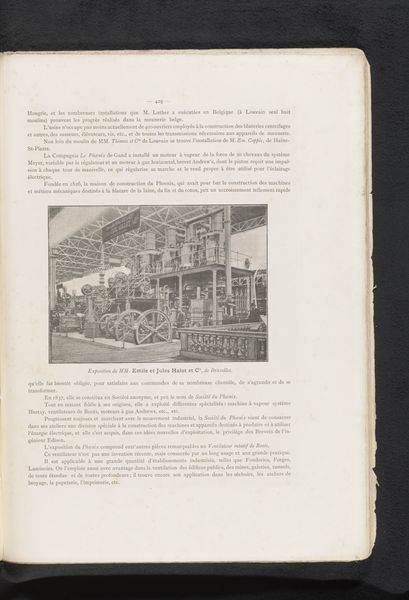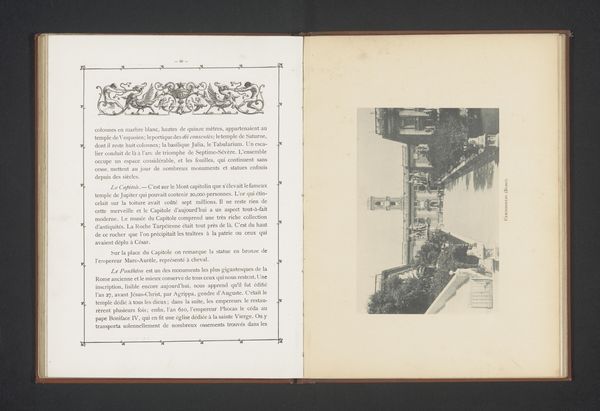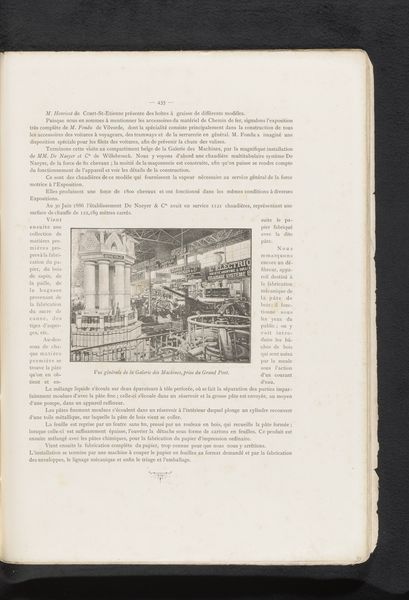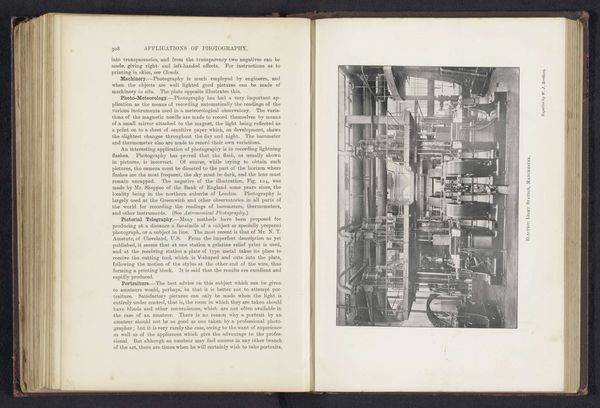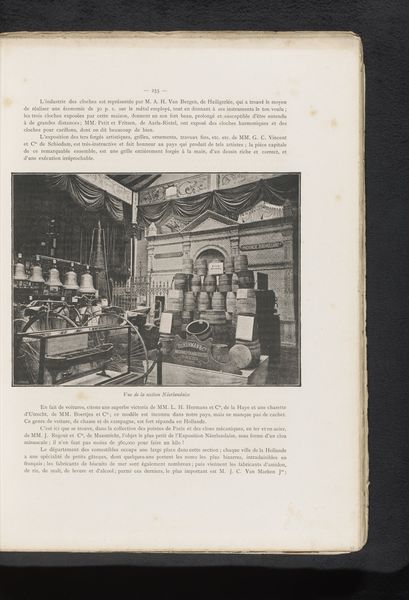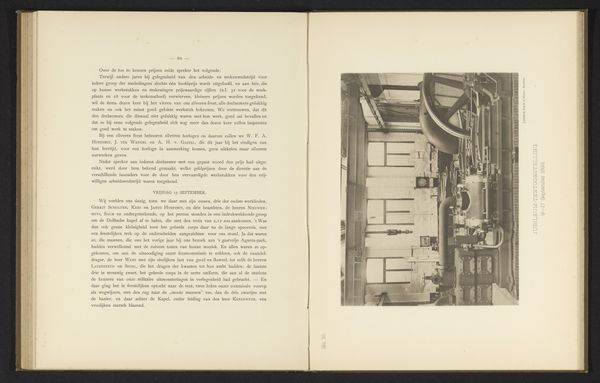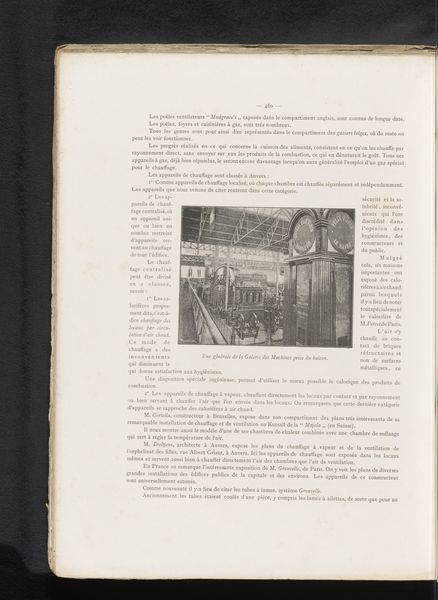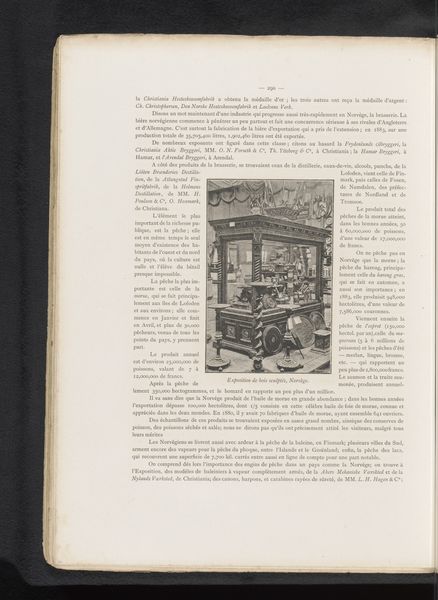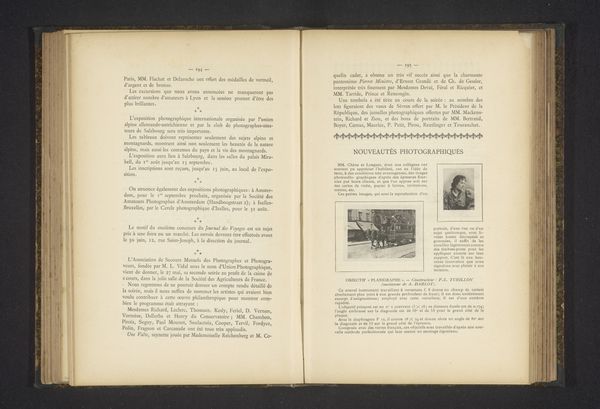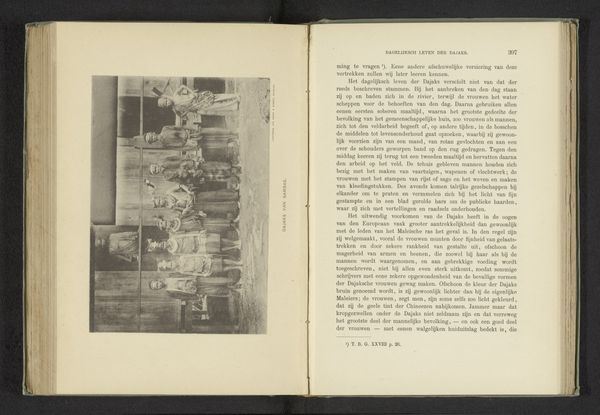
Gezicht op het Duitse deel van de Wereldtentoonstelling van 1885 in Antwerpen before 1885
0:00
0:00
graphic-art, print, photography
#
graphic-art
#
paper non-digital material
# print
#
photography
#
monochrome
Dimensions: height 141 mm, width 106 mm
Copyright: Rijks Museum: Open Domain
Curator: Today, we’re looking at a photographic print entitled “Gezicht op het Duitse deel van de Wereldtentoonstelling van 1885 in Antwerpen,” or, "View of the German section of the World Exhibition of 1885 in Antwerp," created sometime before the exhibition opened. Editor: My initial reaction is…claustrophobia. The image feels tightly packed and oppressively industrial, despite the attempt to showcase innovation. Curator: Indeed. The photographer, whose identity is unfortunately lost to history, captures the "Food Section, Machine Gallery” within the German pavilion. The composition focuses on a dense array of machines, highlighting their intricate forms and geometric arrangements. The texture, preserved through the print medium, showcases sharp contrasts and detailed surfaces, a feat of early photography. Editor: The “progress” displayed here carries a heavy ideological weight. World’s Fairs, ostensibly celebrations of human achievement, were often blatant displays of imperial power and technological supremacy. Whose progress are we celebrating here? What’s erased or obscured in this “objective” view of German industrial might? Curator: An interesting point. Looking closely, the mechanical forms are almost abstracted—decontextualized from any specific function and celebrated as formal structures themselves. There is a certain visual harmony achieved through repetition and the manipulation of light. This transcends any direct narrative beyond their basic mechanical identities. Editor: I disagree. These machines *do* carry a narrative, whether explicit or not. They’re symbolic of a rapidly changing world order, of resource exploitation and the burgeoning class divisions driven by industrial capitalism. Even in this static image, we sense the ceaseless, relentless momentum of production. I am especially mindful about this event happening only 10 years before King Leopold II expanded his control in the Congo Free State. Curator: The image serves as a time capsule, showcasing the aspirations and anxieties of its era through form and texture. Editor: Agreed. This document makes me remember that history is not some distant abstract event, but rather the tangible manifestation of global inequalities that continue today.
Comments
No comments
Be the first to comment and join the conversation on the ultimate creative platform.

